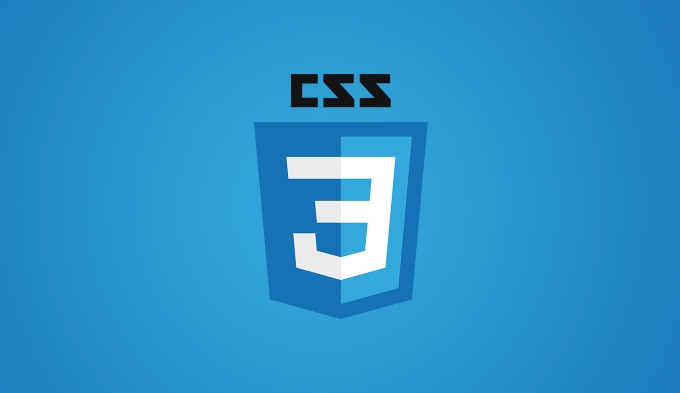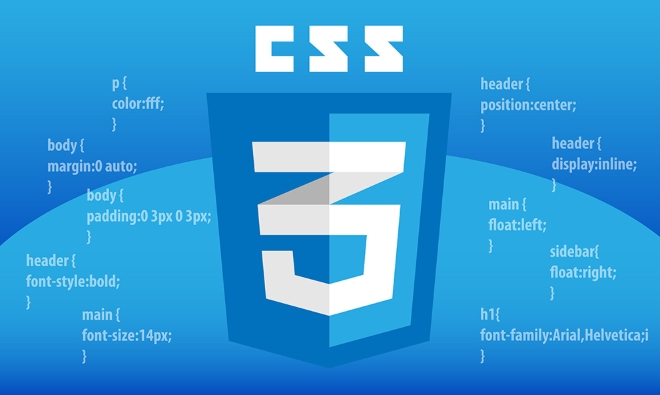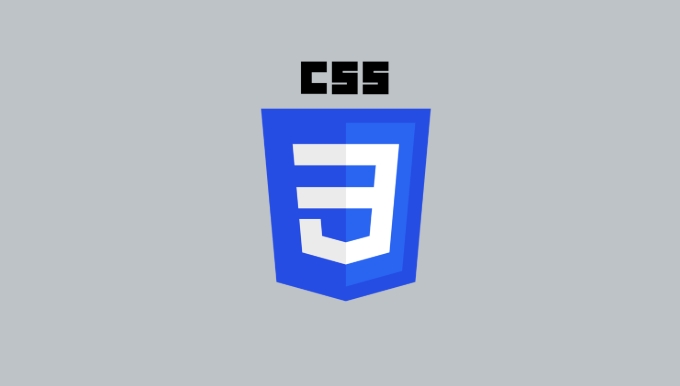Print style sheets can be introduced through link tags or media queries, and it is recommended to use @media print inline maintenance; 2. Common optimizations include: hiding non-essential elements such as navigation and sidebars; using visibility to control the printing area; adjusting fonts and rows to improve readability; ensuring that the picture table does not break across pages; adding URL addresses to the links; avoiding pagination breakpoints appearing in front of the title or list; 3. Actual skills include: avoiding dependence on background colors, controlling paging with page-break-before, and using print preview to test the effect; 4. By setting the .print-content class for the content area and matching the CSS visibility rules, you can only print the body content, thereby significantly improving the clarity and user experience of the print output.

CSS print stylesheets are very useful when you need to optimize print effects on web pages. By default, browsers will include all styles when printing pages, but we usually want to hide navigation, sidebars, buttons, etc. that are not suitable for printing, and adjust fonts, margins, etc. to make the printed content clearer.

Here is a practical example of CSS print styles that works for most web pages.
1. How to introduce a print style sheet
Add in in HTML:

<link rel="stylesheet" href="print.css" media="print">
Or use media query in the main stylesheet:
@media print {
/* Printing style*/
}It is recommended to use inline media queries for easy maintenance.

2. Common printing style optimization
@media print {
/* Hide elements that do not need to be printed*/
.no-print,
nav,
Aside,
footer,
header,
.sidebar,
.navbar,
.buttons,
.ads {
display: none !important;
}
/* Make sure the main content is displayed as block level and takes up the full width*/
body * {
visibility: hidden;
}
.print-content,
.print-content * {
visibility: visible;
}
/* A container can be set as the printing area*/
.print-content {
margin: 0 auto;
max-width: 100%;
padding: 0;
}
/* Adjust the title and paragraph style to improve readability*/
h1, h2, h3 {
color: black;
page-break-after: avoid;
}
p {
font-size: 12pt;
line-height: 1.4;
color: black;
}
/* Keep the picture inside the page to avoid truncation*/
img {
max-width: 100%;
height: auto;
display: block;
page-break-inside: avoid;
}
/* Tables to avoid span breaks*/
table {
page-break-inside: avoid;
width: 100%;
font-size: 10pt;
}
/* Add URL to the link (the link address is displayed when printing) */
a[href]:after {
content: " (" attr(href) ")";
font-size: 90%;
color: gray;
}
/* Avoid breaking of certain elements*/
thead {
display: table-header-group;
}
/* Avoid adding pagination before these elements*/
h1, h2, figure, pre, ul, ol {
page-break-before: avoid;
}
}3. Actual usage skills
Use
visibilityto control the printing area
If you only want to print a certain part (such as the article body), you can usevisibility: hiddento cooperate withvisibility: visibleto precise control.Avoid using background colors and picture printing
Most users do not print backgrounds by default, so do not rely on background colors to convey information:.highlight { background-color: #ff0; color: #000; } @media print { .highlight { background-color: transparent; } }Add paging control
Controls the paging behavior of long content when printing:.page-break { page-break-before: always; }Test printing effect
PressCtrl P(or Cmd P) in Chrome to open the print preview and you can view the effect without actually printing.
4. Example: Print only article content
<article class="print-content"> <h1>Article Title</h1> <p>This is the main content...</p> </article> <aside class="no-print"> <p>This part will not be printed</p> </aside>
With the above CSS, only the article part will be output when printing.
Basically these core skills. The printing style is not complicated, but it is easy to ignore. Adding a piece of @media print can greatly improve the user experience.
The above is the detailed content of css print stylesheet example. For more information, please follow other related articles on the PHP Chinese website!

Hot AI Tools

Undress AI Tool
Undress images for free

Undresser.AI Undress
AI-powered app for creating realistic nude photos

AI Clothes Remover
Online AI tool for removing clothes from photos.

Clothoff.io
AI clothes remover

Video Face Swap
Swap faces in any video effortlessly with our completely free AI face swap tool!

Hot Article

Hot Tools

Notepad++7.3.1
Easy-to-use and free code editor

SublimeText3 Chinese version
Chinese version, very easy to use

Zend Studio 13.0.1
Powerful PHP integrated development environment

Dreamweaver CS6
Visual web development tools

SublimeText3 Mac version
God-level code editing software (SublimeText3)
 CSS tutorial for creating loading spinners and animations
Jul 07, 2025 am 12:07 AM
CSS tutorial for creating loading spinners and animations
Jul 07, 2025 am 12:07 AM
There are three ways to create a CSS loading rotator: 1. Use the basic rotator of borders to achieve simple animation through HTML and CSS; 2. Use a custom rotator of multiple points to achieve the jump effect through different delay times; 3. Add a rotator in the button and switch classes through JavaScript to display the loading status. Each approach emphasizes the importance of design details such as color, size, accessibility and performance optimization to enhance the user experience.
 Addressing CSS Browser Compatibility issues and prefixes
Jul 07, 2025 am 01:44 AM
Addressing CSS Browser Compatibility issues and prefixes
Jul 07, 2025 am 01:44 AM
To deal with CSS browser compatibility and prefix issues, you need to understand the differences in browser support and use vendor prefixes reasonably. 1. Understand common problems such as Flexbox and Grid support, position:sticky invalid, and animation performance is different; 2. Check CanIuse confirmation feature support status; 3. Correctly use -webkit-, -moz-, -ms-, -o- and other manufacturer prefixes; 4. It is recommended to use Autoprefixer to automatically add prefixes; 5. Install PostCSS and configure browserslist to specify the target browser; 6. Automatically handle compatibility during construction; 7. Modernizr detection features can be used for old projects; 8. No need to pursue consistency of all browsers,
 Creating custom shapes with css clip-path
Jul 09, 2025 am 01:29 AM
Creating custom shapes with css clip-path
Jul 09, 2025 am 01:29 AM
Use the clip-path attribute of CSS to crop elements into custom shapes, such as triangles, circular notches, polygons, etc., without relying on pictures or SVGs. Its advantages include: 1. Supports a variety of basic shapes such as circle, ellipse, polygon, etc.; 2. Responsive adjustment and adaptable to mobile terminals; 3. Easy to animation, and can be combined with hover or JavaScript to achieve dynamic effects; 4. It does not affect the layout flow, and only crops the display area. Common usages are such as circular clip-path:circle (50pxatcenter) and triangle clip-path:polygon (50%0%, 100 0%, 0 0%). Notice
 What is the difference between display: inline, display: block, and display: inline-block?
Jul 11, 2025 am 03:25 AM
What is the difference between display: inline, display: block, and display: inline-block?
Jul 11, 2025 am 03:25 AM
Themaindifferencesbetweendisplay:inline,block,andinline-blockinHTML/CSSarelayoutbehavior,spaceusage,andstylingcontrol.1.Inlineelementsflowwithtext,don’tstartonnewlines,ignorewidth/height,andonlyapplyhorizontalpadding/margins—idealforinlinetextstyling
 Styling visited links differently with CSS
Jul 11, 2025 am 03:26 AM
Styling visited links differently with CSS
Jul 11, 2025 am 03:26 AM
Setting the style of links you have visited can improve the user experience, especially in content-intensive websites to help users navigate better. 1. Use CSS's: visited pseudo-class to define the style of the visited link, such as color changes; 2. Note that the browser only allows modification of some attributes due to privacy restrictions; 3. The color selection should be coordinated with the overall style to avoid abruptness; 4. The mobile terminal may not display this effect, and it is recommended to combine it with other visual prompts such as icon auxiliary logos.
 How to create responsive images using CSS?
Jul 15, 2025 am 01:10 AM
How to create responsive images using CSS?
Jul 15, 2025 am 01:10 AM
To create responsive images using CSS, it can be mainly achieved through the following methods: 1. Use max-width:100% and height:auto to allow the image to adapt to the container width while maintaining the proportion; 2. Use HTML's srcset and sizes attributes to intelligently load the image sources adapted to different screens; 3. Use object-fit and object-position to control image cropping and focus display. Together, these methods ensure that the images are presented clearly and beautifully on different devices.
 Demystifying CSS Units: px, em, rem, vw, vh comparisons
Jul 08, 2025 am 02:16 AM
Demystifying CSS Units: px, em, rem, vw, vh comparisons
Jul 08, 2025 am 02:16 AM
The choice of CSS units depends on design requirements and responsive requirements. 1.px is used for fixed size, suitable for precise control but lack of elasticity; 2.em is a relative unit, which is easily caused by the influence of the parent element, while rem is more stable based on the root element and is suitable for global scaling; 3.vw/vh is based on the viewport size, suitable for responsive design, but attention should be paid to the performance under extreme screens; 4. When choosing, it should be determined based on whether responsive adjustments, element hierarchy relationships and viewport dependence. Reasonable use can improve layout flexibility and maintenance.
 What are common CSS browser inconsistencies?
Jul 26, 2025 am 07:04 AM
What are common CSS browser inconsistencies?
Jul 26, 2025 am 07:04 AM
Different browsers have differences in CSS parsing, resulting in inconsistent display effects, mainly including the default style difference, box model calculation method, Flexbox and Grid layout support level, and inconsistent behavior of certain CSS attributes. 1. The default style processing is inconsistent. The solution is to use CSSReset or Normalize.css to unify the initial style; 2. The box model calculation method of the old version of IE is different. It is recommended to use box-sizing:border-box in a unified manner; 3. Flexbox and Grid perform differently in edge cases or in old versions. More tests and use Autoprefixer; 4. Some CSS attribute behaviors are inconsistent. CanIuse must be consulted and downgraded.






